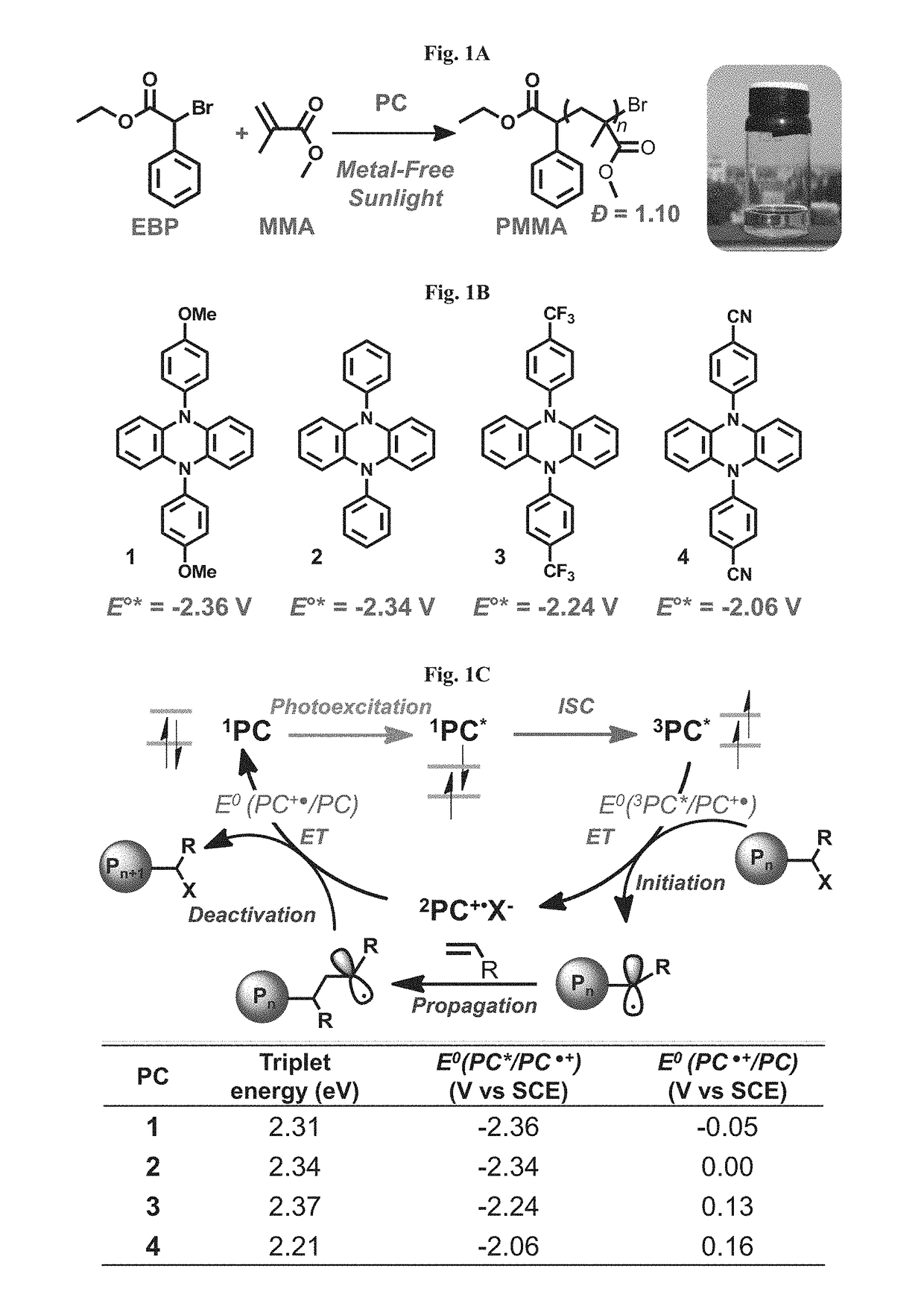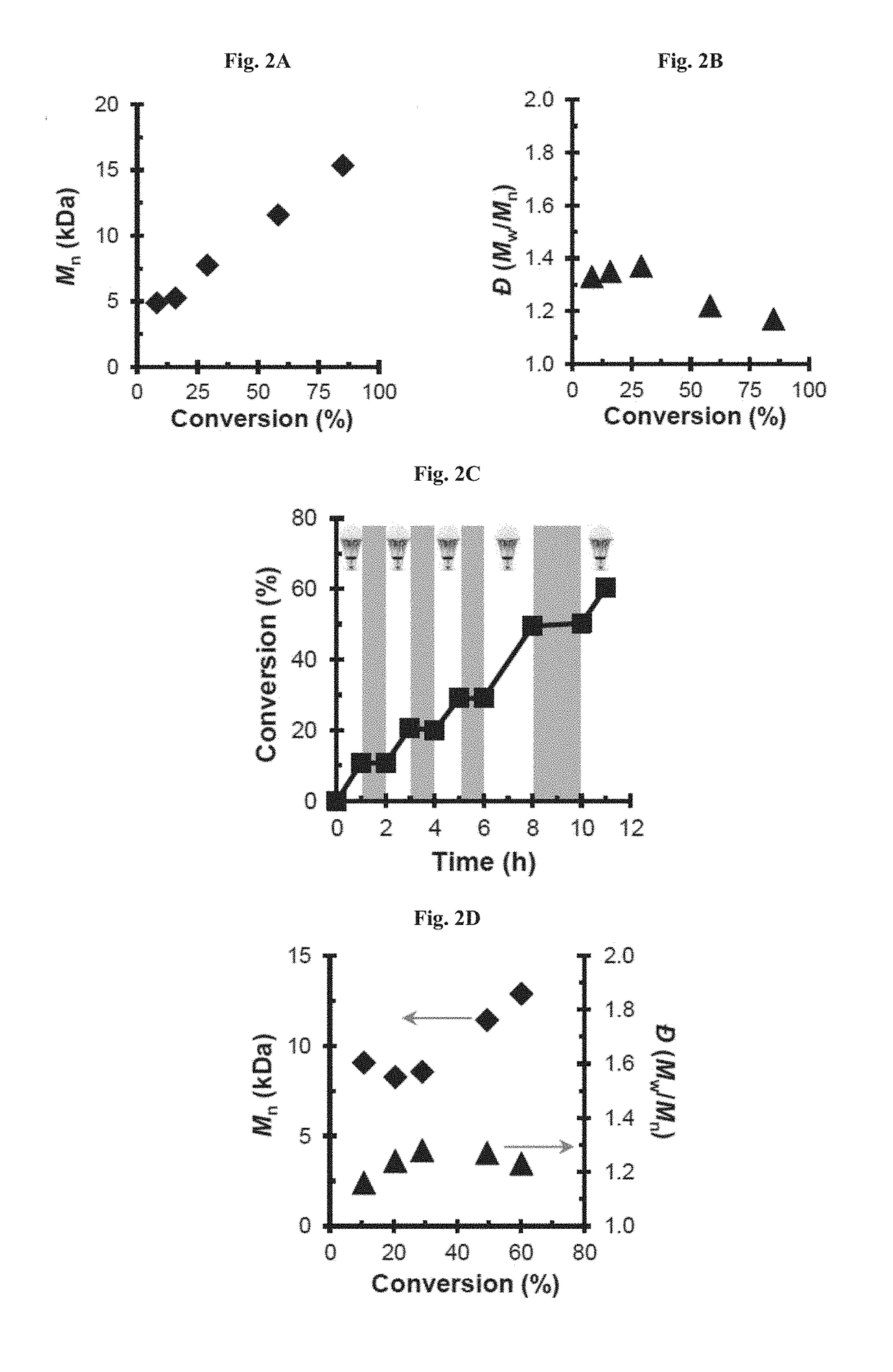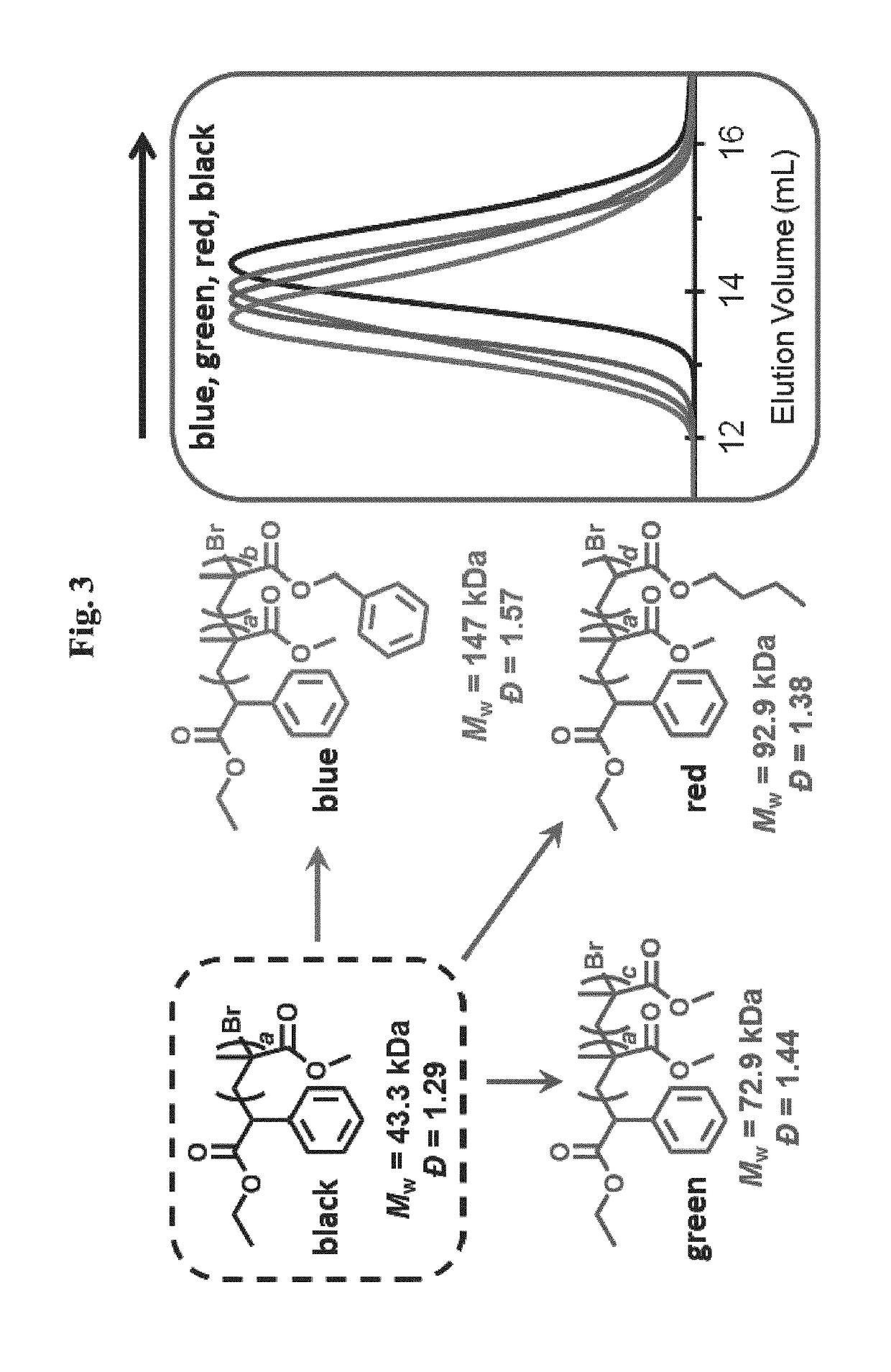Compositions and methods of promoting organic photocatalysis
a technology of organic photocatalysis and compositions, applied in the direction of organic addition, chemical/physical processes, catalytic reactions, etc., can solve the problems of limiting the use of biomedical and electronic applications of transition metal catalysts, not being a broadly applicable replacement for metal-catalyzed atrp, and reducing the desirable reductive quenching pathway, etc., to achieve the effect of promoting reaction
- Summary
- Abstract
- Description
- Claims
- Application Information
AI Technical Summary
Benefits of technology
Problems solved by technology
Method used
Image
Examples
example 1
Representative Results of the Polymerization of Methyl Methacrylate Using Phenazine Dyes
[0188]The results are summarized in Tables 1-2. The results represent that these organic molecules can serve as organic photocatalysts that operate through an oxidative quenching pathway in the polymerization of methyl methacrylate. A controlled radical polymerization was mediated by the CN functionalized diphenyl phenazine, as evidenced by the linear increase in polymer molecular weight and constant dispersity as a function of monomer conversion (FIG. 16). A first-order dependence on monomer conversion as a function of time was observed (FIG. 17). The y-intercept of the Mn vs. conversion plot was 3.46 kDa, suggesting an uncontrolled chain-growth period adding ˜32 MMA equivalents during the onset of polymerization before precise control is attained; whereas, an ideal polymerization would have a y-intercept equal to the mass of the initiator (MW of EBP=243 Da).
example 2
Representative Results of the Polymerization of Methyl Methacrylate Using Acridine Dyes as Photocatalysts
[0189]The results are summarized in Table 5.
TABLE 5Representative Results for the Polymerization of Methyl Methacrylate Acridine Dyes.conversionMwMnDentrycatalystlight sourcesolventtime(%)(kDa)(kDa)(Mw / Mn)I*75white LEDDMAc1 h17.550.623.21.757.5686white LEDDMAc1 h10.562.941.81.518.8797white LEDDMAc1 h17.221.611.11.9415.5108365 nmDMAc1 h5.412.77.71.705.40119365 nmDMAc1 h60.020.416.81.2135.71210365 nmDMAc1 h29.931.315.42.0019.41311365 nmDMAc1 h15.921.611.21.6014.3Conversion measured by 1H NMR. Molecular weight and dispersity measured by gel-permeation chromatography coupled with a light-scattering detector. Initiator efficiency ( / *) = theoretical molecular weight / experimental number average molecular weight * 100.
example 3
Representative Results of the Polymerization of Methyl Methacrylate Using Coronene
[0190]The results are summarized in Table 6.
TABLE 6Representative Results for the Polymerization of MethylMethacrylate Using Coronene as a Phototocatalyst.solventlightvolumeconversionMwMnDentrysourcesolvent(mL)time(%)(kDa)(kDa)(Mw / Mn)I*14white LEDDMAc41 h19.547371.275.414white LEDDMAc42 h33.746381.199.014white LEDDMAc44 h52.447411.1313.114white LEDDMAc47 h67.255511.0813.614white LEDDMAc412 h 79.263591.0613.714white LEDDMAc424 h 91.573701.0413.4Ratio: [MMA]:[EBP]:[coronene] = 1000:10:4; 1.0 ml MMA. Conversion measured by ′H NMR. Molecular weight and dispersity measured by gel-permeation chromatography coupled with a light-scattering detector. Initiator efficiency ( / *) = theoretical molecular weight / experimental number average molecular weight * 100.
PUM
| Property | Measurement | Unit |
|---|---|---|
| Electric potential / voltage | aaaaa | aaaaa |
| Reduction potential | aaaaa | aaaaa |
| Reduction potential | aaaaa | aaaaa |
Abstract
Description
Claims
Application Information
 Login to View More
Login to View More - R&D
- Intellectual Property
- Life Sciences
- Materials
- Tech Scout
- Unparalleled Data Quality
- Higher Quality Content
- 60% Fewer Hallucinations
Browse by: Latest US Patents, China's latest patents, Technical Efficacy Thesaurus, Application Domain, Technology Topic, Popular Technical Reports.
© 2025 PatSnap. All rights reserved.Legal|Privacy policy|Modern Slavery Act Transparency Statement|Sitemap|About US| Contact US: help@patsnap.com



